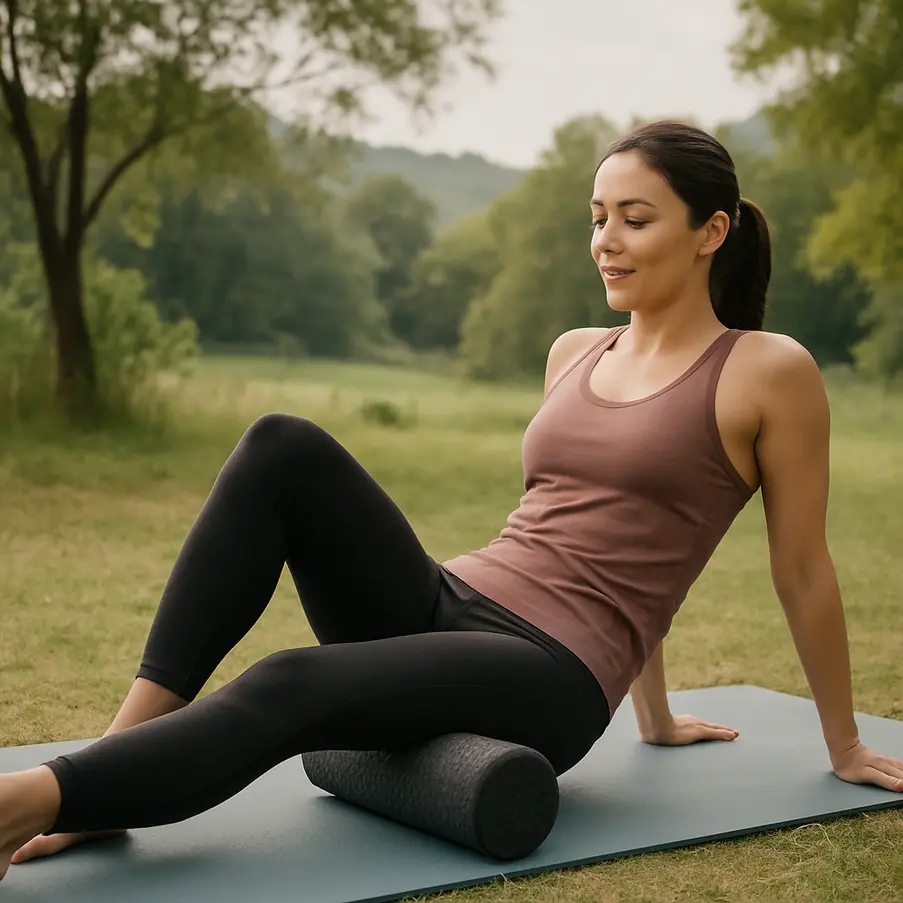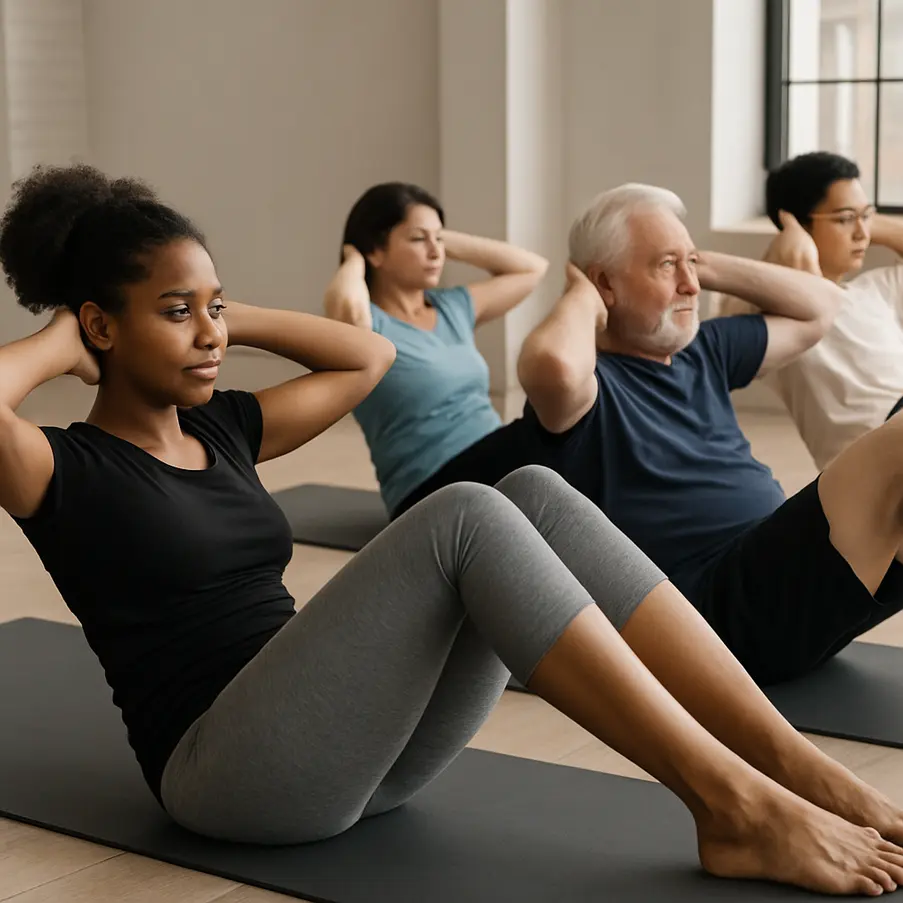Pilates Exercises for Core Strength
Developing a strong core is essential for improving balance, posture, and overall health. As a beginner, diving into the world of Pilates might seem daunting, but fear not! Pilates offers gentle yet effective exercises that cater to all fitness levels, particularly beginners. In this guide, we’ll explore some beginner-friendly Pilates exercises designed specifically to build core strength. With dedication and practice, you’ll discover improved core stability and enhanced physical well-being.
Understanding the Basics of Pilates and Core Strength
Pilates, a system of exercises developed in the early 20th century by Joseph Pilates, focuses on strengthening the body with an emphasis on core muscles. Originally known as “Contrology,” this methodology brings harmony between body and mind, promoting overall health and wellness. At the heart of Pilates lies the concept of core strength, pivotal not only in executing Pilates exercises but also in enhancing daily functioning.
Understanding core strength begins with recognizing the core as more than just abdominals. It encompasses muscles in the front and sides of the abdomen, including deep muscles like the transverse abdominis, multifidus, and diaphragm. These muscles are integral for stability, posture, and balance, acting as the body’s powerhouse in Pilates. When you perform Pilates exercises, you’re engaging and strengthening these vital muscles, leading to better alignment and efficiency in movement.
Key principles define Pilates practice. Alignment ensures that movements stem from a stable core, promoting proper body mechanics and reducing injury risk. The emphasis on breathing is another core tenet, where oxygen flow aids muscle engagement and helps maintain focus during exercises. The principle of control reminds practitioners that precision in movement is more vital than speed, fostering muscular strength and neuromuscular coordination.
Enhanced core strength translates into numerous benefits in everyday life. Improved posture is a significant benefit, as a strong core supports the spine, reducing the chance of back pain and encouraging an upright stance. Better balance is another advantage, crucial for athletes and invaluable for older adults seeking to prevent falls. Furthermore, a strong core aids in reducing injury risk by ensuring efficient force transfer during physical activities, providing a stable center from which limbs can move freely.
Incorporating Pilates into your routine can’t be understated. As you build a foundation of core strength, you’ll not only perform exercises more effectively but also improve your body’s functionality outside of workouts. If you’re curious about complementing your Pilates practice with enhanced mobility, you might find mobility exercises for lower back pain a beneficial addition to your routine.
Essential Beginner Pilates Exercises for Core Strength

When diving into Pilates for core strength, starting with foundational exercises ensures you build a solid base. Let’s explore a few timeless movements: The Hundred, Single Leg Stretch, and Roll-Up.
The Hundred
This classic exercise warms up the body and boosts circulation while targeting the abdominals. To begin, lie on your back with legs raised in a tabletop position and arms by your sides. Lift your head, neck, and shoulders off the mat. Extend your legs to 45 degrees for more challenge. Inhale deeply for five counts while vigorously pumping your arms up and down, then exhale for another five. Repeat until you reach a count of 100. Focus on engaging the transverse abdominis to prevent strain in your lower back.
Single Leg Stretch
The Single Leg Stretch enhances balance and strengthens the core, particularly the rectus abdominis. Lie down on your back and bring both knees into your chest. Lift your head, neck, and shoulders, then extend your left leg about 45 degrees from the floor. Grasp your right shin with both hands just below the knee. Inhale deeply, then switch legs as you exhale, pulling the opposite knee towards you. Cycle through 8-10 repetitions. Remember to maintain a light grip to avoid breaking the flow of your breath.
Roll-Up
This exercise is a powerhouse for spinal articulation and targets not just your abs but also your spinal flexors. Start by lying flat with your arms extended overhead. Engage your core to peel your spine off the mat, reaching your fingers towards your toes. Exhale reaching forward, then inhale as you roll down, vertebra by vertebra. Aim for 6-8 repetitions, prioritizing a slow, controlled motion. Ensure your navel is drawn towards your spine to maximize core engagement.
For enhanced flexibility, consider integrating mobility exercises for desk workers (https://pleasureinhealth.com/mobility-exercises-for-desk-workers/) with your Pilates routine. This can further alleviate tension and improve overall posture.
Proper form is crucial for each of these exercises—avoid overarching the back, and keep the neck relaxed. Consistent practice of these foundational Pilates movements sets the stage for more complex sequences, ultimately leading to a robust and resilient core.
Tracking Progress and Adapting Beginner Pilates Exercises
One of the gratifying aspects of embarking on a beginner Pilates journey is seeing your progress over time. To accurately capture this evolution, it’s essential to track your progress meticulously. Using a journal allows you to jot down detailed notes about each session, focusing on repetitions, perceived effort, and any noticeable improvements. Alternatively, several fitness apps offer specialized features for tracking Pilates exercises, often including options to record video or note-specific form adjustments.
It’s important to remain mindful of how your body feels and responds to these exercises. As your core strength increases, you might find beginner Pilates routines less challenging. Instead of sticking to the same routine, consider modifying your exercises. This can involve increasing the difficulty level by adjusting positions slightly or incorporating small props like resistance bands or light weights. Implementing gradual changes ensures that your exercises remain engaging and challenging.
Setting realistic goals is crucial for sustained motivation. Break larger fitness targets into smaller, achievable milestones. For instance, increasing the number of consecutive roll-ups you can do is a sign of tangible progress. Recognizing and celebrating these small victories can provide a necessary motivation boost, especially on days when your enthusiasm wanes.
If you’re looking to diversify your core workouts even further, consider exploring related mobility exercises. For instance, our blog offers valuable insights on different mobility drills to enhance overall flexibility. Check out our guide on this topic here.
With your progress tracked and exercises gradually adapted, you’ll ensure that each Pilates session is not just a workout but a meaningful part of your journey towards better core strength and overall health.
Incorporating Pilates into Your Daily Routine
Integrating Pilates into your daily routine can seem daunting at first, but with a few simple strategies, it becomes second nature. Scheduling your Pilates session is crucial for consistency. Choose a time of day when you have energy and can focus. For some, this might be the early morning to start the day energized, while others may prefer the evening to unwind.
Setting aside 20-30 minutes can be sufficient, especially when complemented with mobility exercises for flexibility, which you can explore in our enhancing flexibility guide.
To maintain consistency, treat your Pilates sessions as non-negotiable appointments. Use a calendar reminder or an app to alert you at your chosen time. On days when motivation is low, remind yourself of the mental and physical benefits, such as alleviating stress and enhancing focus, linked to regular practice. This mindful movement supports your core and contributes to an overall sense of well-being.
Additionally, recognize the importance of rest and recovery in your routine. Listening to your body and taking breaks when required prevents burnout and injuries. A rest day might include gentle stretches or mindfulness activities that keep you connected to your health goals.
Remember, it’s normal for motivation to wane. On tough days, start by simply rolling out your mat and engaging in a brief session. Often, getting started is the hardest part, and even a small effort counts toward progress. Celebrate these small victories and notice how they build over time.
Finally, keep in mind the positive ripple effects of your Pilates commitment. As core strength becomes a foundation in your life, you might experience improved mobility, which can aid in preventing injuries and enhancing overall fitness. Your dedication to this now can lead to lifelong benefits, making every moment on the mat worthwhile.
Final words Pilates Exercises for Core Strength
Embracing the power of beginner Pilates exercises for core strength can be a rewarding journey. As you explore these exercises, remember that consistency and patience are key. Progress might seem gradual, but with dedication, you’ll notice significant improvements in your core strength and overall well-being. I encourage you to explore more Pilates routines and resources available on our site to continue enhancing your fitness and health journey.



$ 69,00Original price was: $ 69,00.$ 49,00Current price is: $ 49,00.$ 69,00Original price was: $ 69,00.$ 49,00Current price is: $ 49,00.$ 79,00Original price was: $ 79,00.$ 49,00Current price is: $ 49,00.